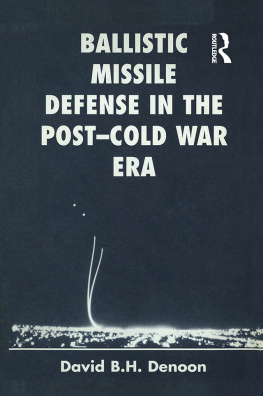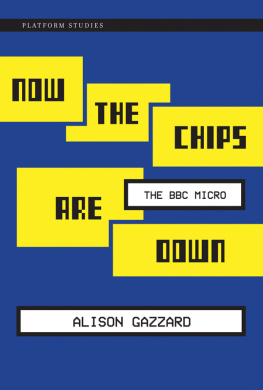This edition first published in hardcover in the United States in 2018 by
The Overlook Press, Peter Mayer Publishers, Inc.
141 Wooster Street
New York, NY 10012
www.overlookpress.com
For bulk and special sales, please contact
or write to us at the above address.
Copyright 2018 by Iain Dey and Douglas Buck
All rights reserved. No part of this publication may be reproduced or transmitted in any form or by any means, electronic or mechanical, including photocopy, recording, or any information storage and retrieval system now known or to be invented, without permission in writing from the publisher, except by a reviewer who wishes to quote brief passages in connection with a review written for inclusion in a magazine, newspaper, or broadcast.
EISBN 978-1-4683-1578-3

With 27 black-and-white photos
D r. Dudley Allen Buck was a brilliant young scientist and MIT professor who developed or invented several pieces of now-common technology, most notably the cryotron, an early form of the microchip. Thought to be able to guide a new generation of intercontinental ballistic missiles to their targets, the cryotron attracted attention from around the world. Like his Nobel-winning colleagues, Buck might have benefited from his inventions, had he not died from a mysterious, sudden bout of pnuemonia at the age of thirty-twojust weeks after a high-profile group of Soviet scientists visited his lab on a tour of the US.
Buck was not the only scientist to die that day; his colleague Dr. Ridenour, chief scientist at Lockheed, was also found dead from similar causes. Were their deaths linked? Bucks lab books, diaries, correspondence, research papers, patent filings, and other recently discovered papers reveal his extensive career in clandestine government work that took him around the globe and behind the Iron Curtain for agencies including the NSA, putting him in contact with the Soviet Unions top computer scientists. Did Bucks pioneering work with microchips and his work for intelligence agencies make him a target of the KGB?
Armed with this research, award-winning journalist Iain Dey tells with compelling immediacy the story of Dudley Bucks life and groundbreaking work, starting from his unconventional beginnings in California through his untimely death and beyond. The Cryotron Files is at once the gripping narrative history of America and its computer scientists during the Cold War and the dramatic personal story of rising MIT star Dudley Buck in the high-stakes days of spies, supercomputers, and the space and nuclear races.
To my mother, who was left to raise three small children as a widow. To Bobbie. To my brother David, who, together, kept digging for information.
Douglas Buck
To Carla, for her endless support. To Allegra, for always making me smile. To Anne & Charley, for everything. And to Cristina, for always nudging me to put my hand up.
Iain Dey
R AINCLOUDS WERE HANGING OVER I DLEWILD I NTERNATIONAL A IRPORT as the KLM flight from Amsterdam touched down on the tarmac. Sergey Lebedev peered out of the window, unimpressed. They had told him in Moscow that New York was at its best in Aprilbright and sunny, yet without the oppressive heat and humidity of summer. He had left his raincoat at home and advised the six Soviet computer experts joining him for the trip not to bother bringing theirs either.
The propellers of the Lockheed Super Constellation were still winding down as the group got to the top of the planes steps. One by one they looked up at the gathering storm and realized their wardrobe error. Above the noise of the engines, Lebedev could hear the grumbling begin.
It was Sunday, April 19, 1959. They had left Moscow two days earlier, and all were in need of sleep.
Each man carried a black leather briefcase. Some contained drawings and notes about the biggest and best computers in the Soviet Unioninformation they planned to present to the Americans. Others were carrying vodka and black caviar to treat their hosts during what was scheduled to be a two-week tour of the United States.
They had come for a rapprochement. The US government had agreed to let the Russians see inside Americas most secret computer labs; the Kremlin would offer the same courtesy in exchange.
Lebedev, at age fifty-six the Soviet Unions top computer expert, had been tasked with leading the delegation himself. During World War II he had built a system to stabilize the sights of tank cannons. He then created the first computer in the Eastern bloc with a small group of researchers at the University of Kiev, which in turn led to him being handpicked by Joseph Stalin to lead the USSRs computer effort. He had retained the role under the new premier, Nikita Khrushchev, and was finally starting to make progress with his inventions.
Although the Soviet Union had caught up with America on the nuclear bomb and had beaten the Americans into space with the launch of Sputnik some fifteen months earlier, computer technology was one area where the Americans had a sizable advantage.
Stalin was an obstacle to the development of Soviet computer technology. He had objected to the development of any machine that would replicate the human brain or replace a man on a factory production line; he saw it as a capitalist evil. That had forced Lebedev and his contemporaries to develop computers with very strictly defined military missions: for translation, weather forecasting, and to calculate the firing range of missiles.
America, on the other hand, had burned billions of dollars on a sprawling mass of computer projects with undefined or moving objectives. Private companies were competing with universities and government departments for lucrative defense contracts to build computers for the army, the air force, the navy, or the newly created commercial honeypot that was NASA, the American space agency. It was a creative hotbed that had spawned a booming industry, one that was inventing ever more advanced technologies at breakneck speed.
Lebedev had built an impressive machine in his lab in Moscow, but had not worked out how to mass-produce the device effectively. The Americans, meanwhile, were already rolling out reliable computers by the hundreds.
American businesses were installing giant machines sold by the likes of IBM and RCA which could be used to run their payrolls or settle their taxes. Programs were under way to computerize air traffic control and US census data.
Both superpowers knew that computer technology had the power to change the dynamics of the Cold War. There were clear economic benefits to be gained from the digitization of the American economy. Yet there were also more direct military uses for computing power. Both sides were developing nuclear missiles at great pace, and computers were needed to guide those missiles and to identify and shoot down any incoming enemy threats. The American science community was bubbling with stories about one young scientist in particular.
Dudley Buck at MIT had developed an ultrafast computer with no moving parts that would fit in a mans shirt pocket. Given that the most advanced computers at that time occupied whole floors of office buildings, it was an attention-grabbing concept. Buck had been touring America to educate academics and business leaders about his work. Although the term had not yet been coined, he had invented a prototype microchip named the Cryotron.
The Soviet Union was years behind on this technology, and that posed a serious problem for Lebedev. According to an article Lebedev had seen in









